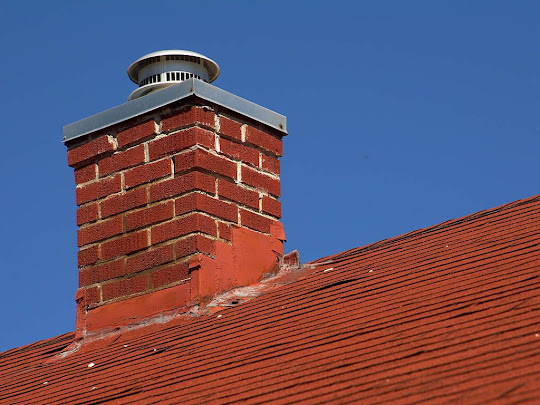Common Causes of Chimney Cracks
What is A Crack in a Chimney?
What are the common causes of Chimney Cracks?
- Settlement: Chimneys are significant foundation-supported structures. The chimney can shift and fracture as it reacts to various stress situations as an outcome of uneven ground shifting over time. Changes in the foundation ground support can be significantly severe by building activities nearby, changes in the soil composition, and patterns of water drainage.
- Weathering: Chimney materials are subjected to slow degradation due to exposure to elements including rain, snow, and variations in temperature. For instance, freeze-thaw cycles—in which water penetrates cracks and expands when it freezes—can speed deterioration. In addition, substances may degrade and lose their firmness over time when confronted with UV rays from sunlight.
- Poor construction: Poor quality materials or construction methods make chimneys more susceptible to cracking. Poor mortar mixes or inadequate reinforcement can cause weaknesses that eventually appear as cracks. Water intrusion into the chimney structure because of poor chimney caps or crowns may cause deterioration.
- Thermal expansion and contraction: Materials expand and compress when the chimney heats up during use and chills down afterwards. This ongoing movement, especially in older chimneys where the substances may have already seen some degree of degradation, could eventually give rise to stress spots and cracks.
- Chimney fire: The intense heat produced by a chimney fire may be more than the materials are capable of withstanding, which could lead to rapid growth and possibly severe cracking or spalling (the tearing off of the surface layer). Even if there isn’t any obvious harm done immediately following the chimney fire, the building may become less sturdy and more susceptible to cracks in the future.
- Moisture: Significant damage can occur from water leaking into the chimney through cracks or breaks. Over time, moisture may lead to structural failure, rust parts of metal, and deteriorate mortar joints. Moisture that freezes within breaks may develop in colder regions, producing more damage.
- Age: Naturally, older chimneys need maintenance. Due to ongoing exposure to environmental pressures such as ageing, temperature cycling, and chemical reactions with air pollution, materials degrade with age, becoming less dense and susceptible to cracking.
- Vibration: Chimney constructions can be affected by vibrations from neighbouring construction, heavy machinery, or traffic. Prolonged intervals of vibration exposure can gradually damage mortar joints and create cracking. In addition, sudden stress from seismic activity in regions susceptible to earthquakes may result in cracks or even the collapse of chimneys if the structure has not been properly supported.
- Tree roots: When trees are planted too near to a chimney, the roots can extend far into the soil which could put strain on the foundation of the chimney. This pressure has a chance to move the base over time, which might result in cracks in the chimney’s structure. Moreover, they can absorb water from the earth, which may lead soil to shrink and further damage the foundation of the chimney.
- Poor maintenance: Small problems can grow when regular chimney cleaning, repairs, and inspections are ignored. If overlooked small cracks or failing mortar joints can get greater over time and possibly compromise the structural integrity of the chimney. Regular maintenance helps find potential problems early on and repair them, saving costly replacements or chimney failures down the road.
What are the different types of Chimney Cracks?
Hairline cracks: The structural integrity of the chimney may not be immediately affected by these very small, often surface splits. Typically, they are caused by minor thermal settling or expansion and contraction.
Stair-step cracks: These cracks often create an angled pattern in masonry chimneys that looks like stepping. They indicate potential issues with foundations or structures related to stress movement or settlement within the chimney construction.
Vertical cracks: cracks in the chimney building that are possibly straight up or down. You must take action on these to stop further harm. They can be caused by heat expansion and contraction, settling down, or structural movement.
Horizontal cracks: Cracks that cross the chimney horizontally. These are particularly risky since they could be signs of more significant structural problems, like excessive load transporting or movement in the foundation. A specialist ought to inspect horizontal cracks right away to determine the level of harm and what has to be fixed.
Corner Cracks: The stress concentrations that typically occur around the corners of chimney cracks have become especially noticeable. The chimney’s structure is weakened in these locations since cracks typically appear wherever two walls come together, both upwards and horizontally. Several factors can cause them, such as thermal fluctuation, foundation settling, or structural shifts over time.
.jpg)
.jpg)

.jpg)
Comments
Post a Comment